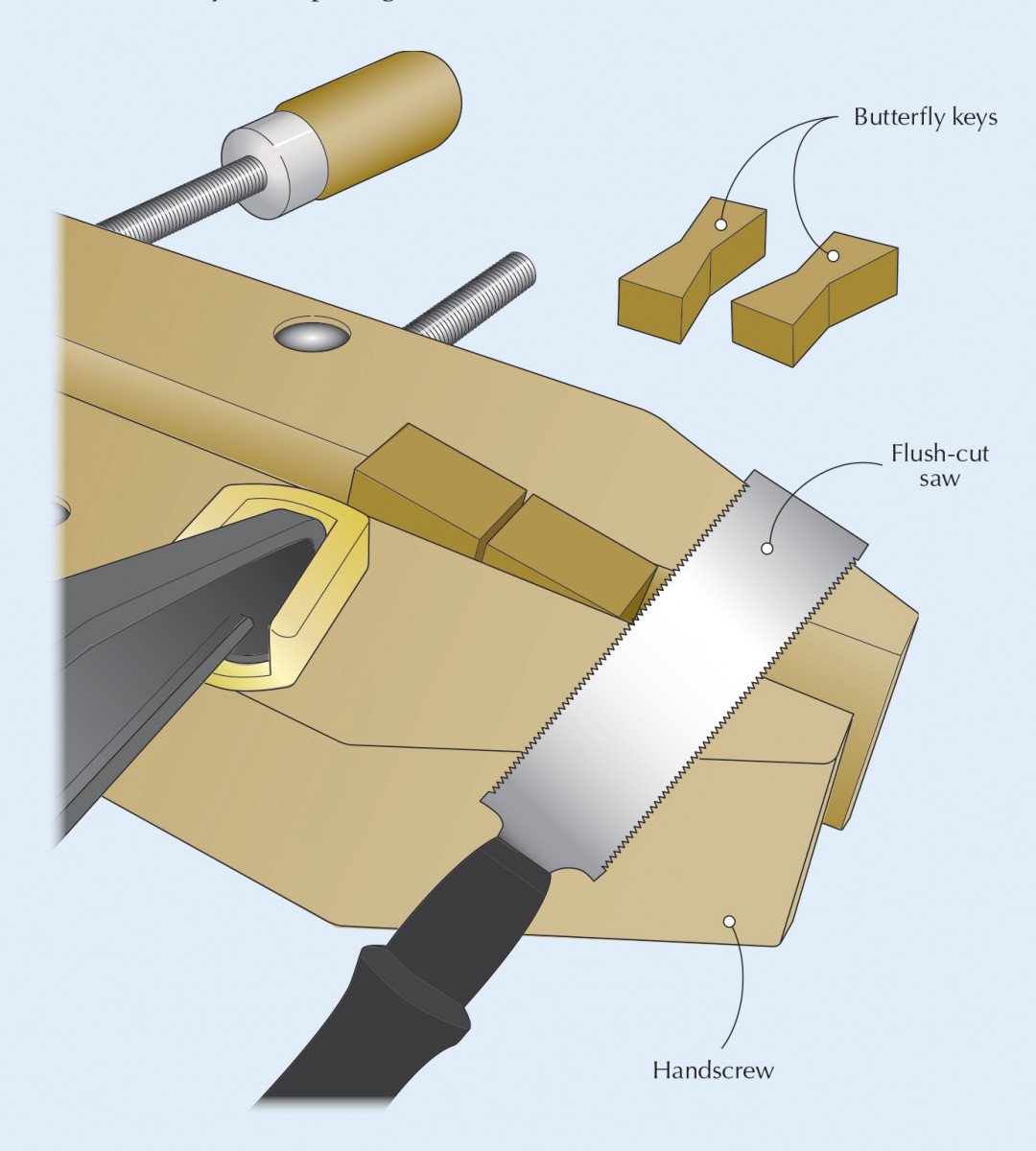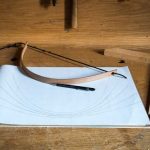We may receive a commission when you use our affiliate links. However, this does not impact our recommendations.
 I used to struggle making Dutchman keys (also known as butterflies) – but I love using them in my furniture. So, I came up with an idea that works well and makes the process completely painless.
I used to struggle making Dutchman keys (also known as butterflies) – but I love using them in my furniture. So, I came up with an idea that works well and makes the process completely painless.
Because the pieces are small (only 2″ long in my typical work), I had them set up in a handscrew on my benchtop to chisel out the waste. I realized that if I were to line up the cut with the side jaw surface of my handscrew, I could use my flush-cut saw to split the layout line and not have to worry about paring.
The waste that drops off also happens to make perfect wedges, minimizing waste.
One thing to keep in mind while using handscrews either as a paring block or saw guide is that rarely are the two jaws ever completely in line with each other. This is a huge advantage when making pieces for inlay, because it allows for a slight taper to be cut, much like double-bevel marquetry. Just clamp to your line and saw. –Ethan Thrasher
Here are some supplies and tools we find essential in our everyday work around the shop. We may receive a commission from sales referred by our links; however, we have carefully selected these products for their usefulness and quality.









